Journey Through Beijing's Imperial Heart
Embark on a captivating journey through Beijing's rich history and culture with this free walking tour, exploring iconic landmarks and hidden gems.
Time
3 Hours
Stops
9 Places
Distance
3.8 km
Tiananmen Square
Start your tour at Tiananmen Square, one of the world's largest public squares, which serves as a historical and cultural heart of Beijing.
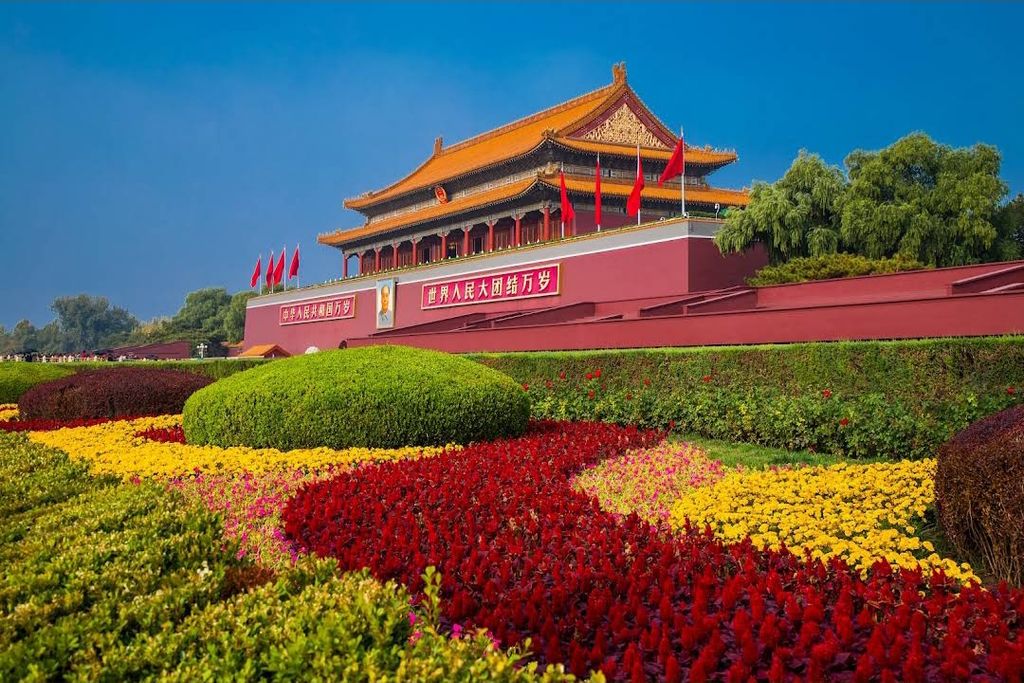
Tiananmen Square (Source: Google Maps)
Tiananmen Square is one of the largest public squares in the world, symbolizing the historical and cultural heart of Beijing. With a rich history dating back to the Ming Dynasty, it has witnessed numerous significant events, including the May Fourth Movement and the 1989 protests. The square is flanked by important structures, including the Great Hall of the People and the National Museum of China, and is a popular gathering place for both locals and tourists. Its vast open space and monumental significance make it a must-visit for anyone exploring the city.
Monument to the People's Heroes
Located in the center of Tiananmen Square, this monument commemorates those who fought for China’s liberation and modernization.
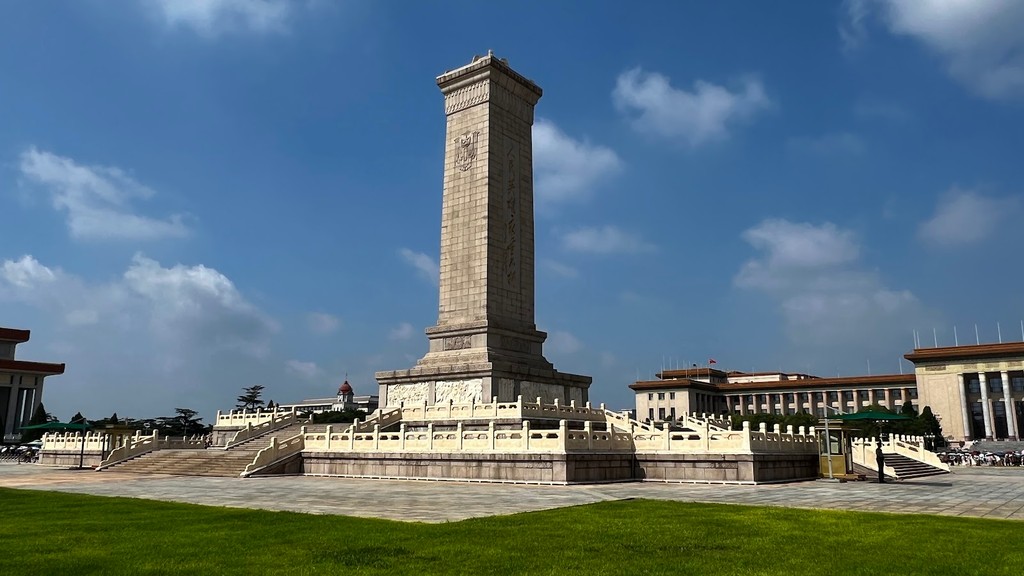
Monument to the People's Heroes (Source: Google Maps)
Standing proudly in the center of Tiananmen Square, the Monument to the People's Heroes was erected in 1958 to honor those who sacrificed their lives in the struggle for China’s liberation and modernization. The monument is a towering granite obelisk, adorned with bas-reliefs depicting key events and figures in Chinese revolutionary history. It is a site of remembrance and reflection, where visitors can pay their respects to the heroes of the past. The monument not only symbolizes national pride but also serves as a reminder of the ongoing journey towards progress in China.
National Museum of China
Just a short walk from the square, this museum offers a deep dive into China’s rich history and culture through extensive exhibits.
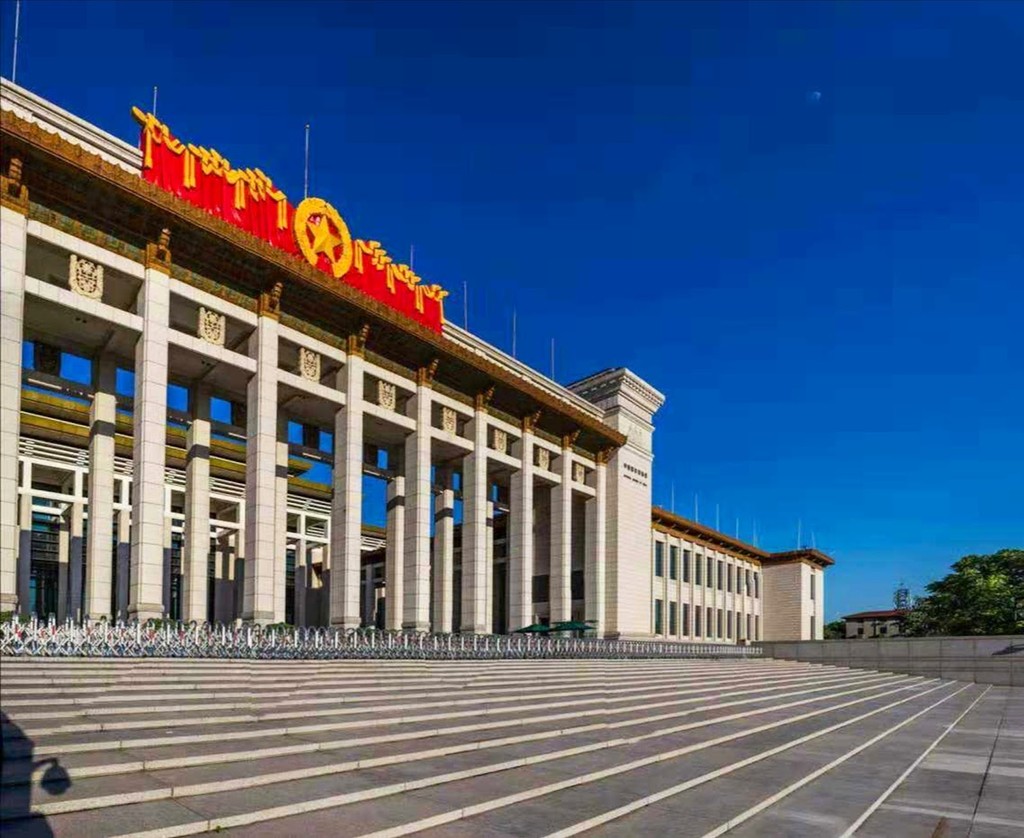
National Museum of China (Source: Google Maps)
The National Museum of China, located on the eastern edge of Tiananmen Square, is one of the largest museums in the world, dedicated to showcasing the rich tapestry of Chinese history and culture. Its vast collections span from ancient artifacts to modern history, offering visitors a comprehensive overview of China's evolution over thousands of years. The museum features exhibitions on topics such as ancient civilizations, the Silk Road, and revolutionary history, making it a treasure trove for history enthusiasts. Its architectural design, combining traditional and modern elements, reflects the grandeur of China’s cultural heritage.
Tiananmen Gate (Gate of Heavenly Peace)
This iconic gate marks the entrance to the Forbidden City and is adorned with a portrait of Chairman Mao.
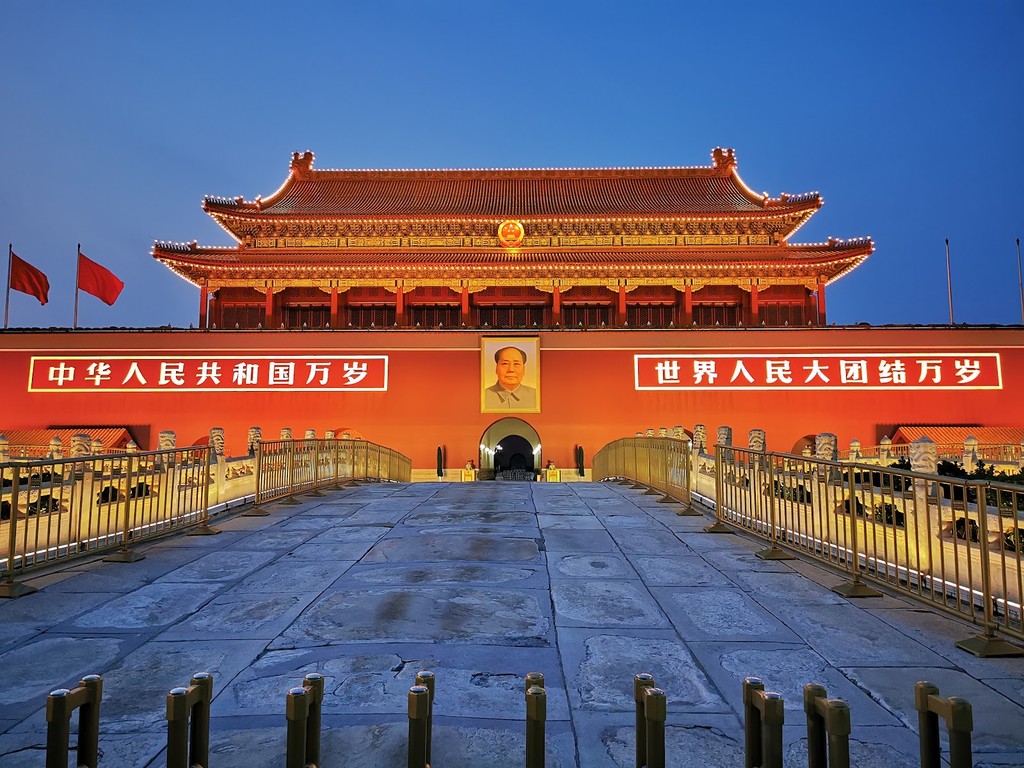
Tiananmen Gate (Gate of Heavenly Peace) (Source: Google Maps)
The Tiananmen Gate, or Gate of Heavenly Peace, is an iconic symbol of Beijing and serves as the main entrance to the Forbidden City. Constructed in the 15th century during the Ming Dynasty, the gate is adorned with a large portrait of Chairman Mao Zedong, which has become a significant emblem of the People's Republic of China. The gate's architecture showcases traditional Chinese design, featuring vibrant colors and intricate eaves. It has been the site of many historical events, including state ceremonies and military parades, making it a pivotal landmark in the city's history.
Meridian Gate (Wu Men)
As the main entrance to the Forbidden City, the Meridian Gate is a grand architectural marvel that sets the stage for the palace complex.
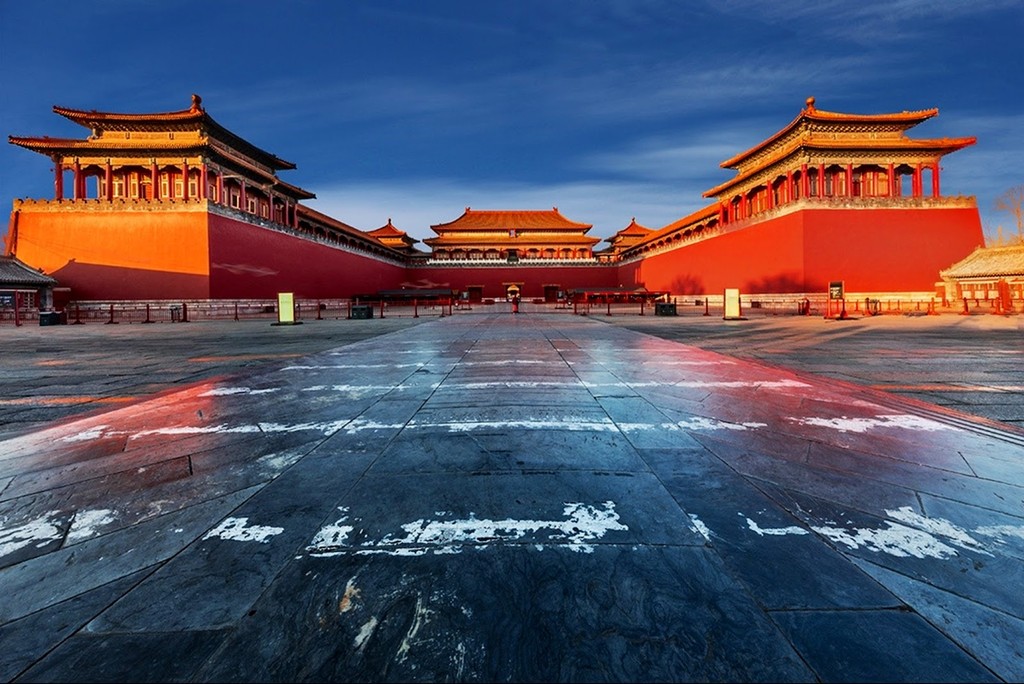
Meridian Gate (Wu Men) (Source: Google Maps)
The Meridian Gate, also known as Wu Men, is the main entrance to the Forbidden City and one of its most impressive architectural features. Built in the early 15th century, it exemplifies the grandeur of imperial architecture with its towering structure and ornate decorations. The gate is divided into five openings, with the central passage reserved for the emperor, symbolizing his supreme authority. It serves as a gateway to the vast palace complex, which was home to emperors for nearly 500 years. The Meridian Gate's design reflects the principles of Feng Shui, emphasizing harmony and balance within the imperial space.
Hall of Central Harmony
A smaller, more intimate hall where emperors prepared for ceremonies, offering insight into the life of Chinese royalty.
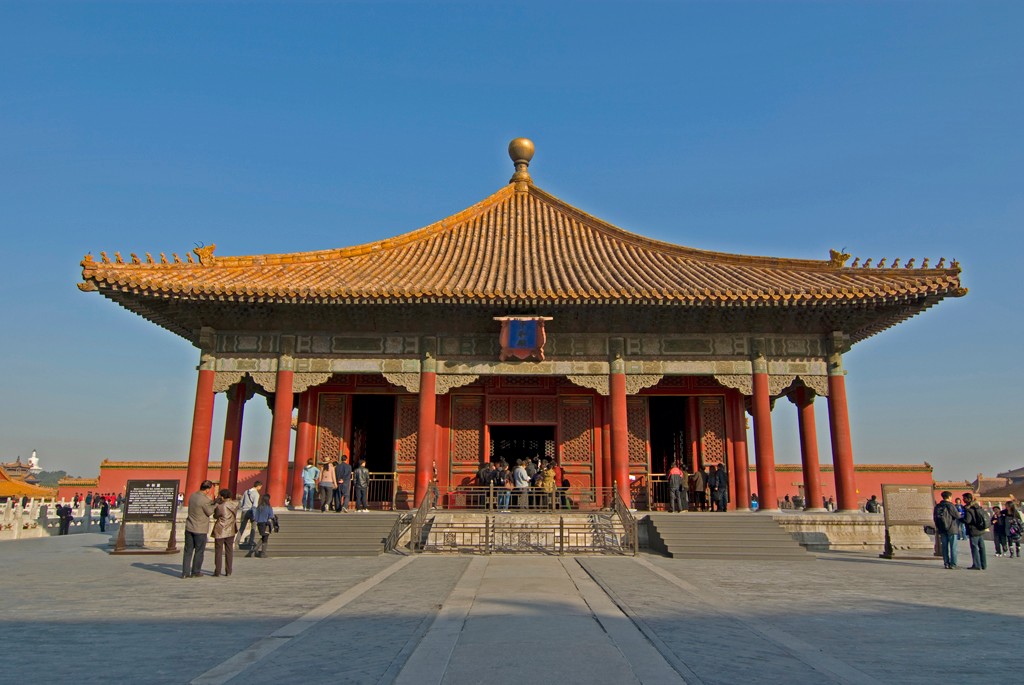
Hall of Central Harmony (Source: Google Maps)
The Hall of Central Harmony is a smaller, yet significant structure within the Forbidden City, where emperors prepared for important ceremonies. Constructed during the Ming Dynasty, this hall is an exquisite example of traditional Chinese architecture, featuring a raised platform and intricately decorated interiors. It was primarily used for imperial rituals, including the coronation of emperors and other state ceremonies. The hall’s intimate setting offers a glimpse into the ceremonial life of Chinese royalty, showcasing the importance of harmony and balance in governance and culture during imperial times.
Hall of Supreme Harmony
The largest hall within the Forbidden City, it was used for grand ceremonies and is a stunning example of imperial architecture.
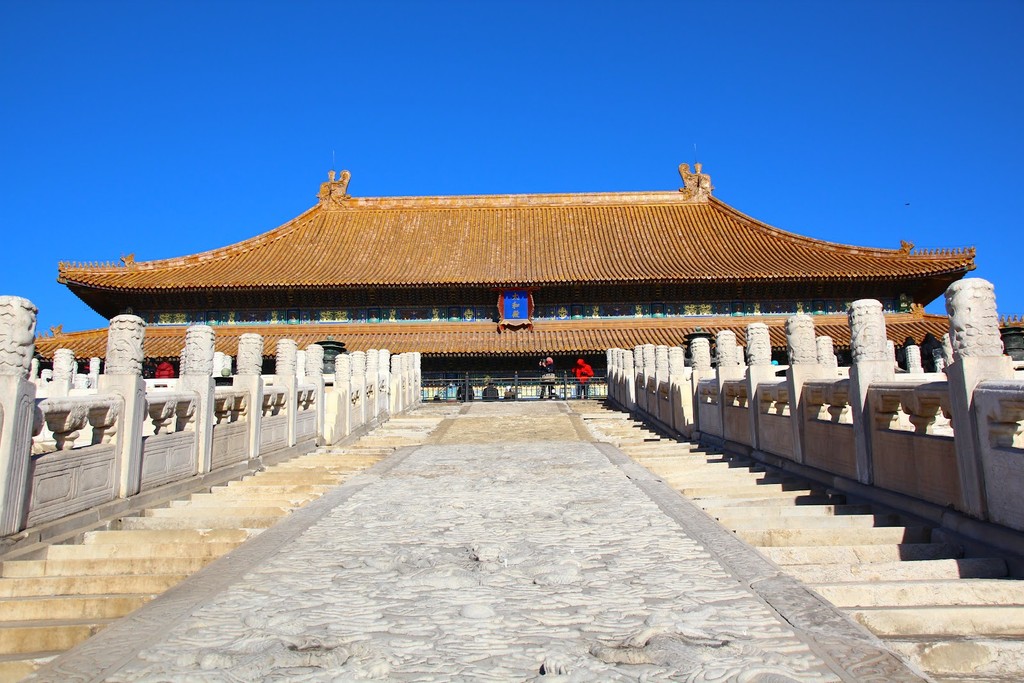
Hall of Supreme Harmony (Source: Google Maps)
The Hall of Supreme Harmony is the largest and most important hall within the Forbidden City, serving as the centerpiece of the imperial palace complex. This grand structure was used for major state ceremonies, including coronations, weddings, and the emperor's birthday celebrations. Its architectural design is a stunning example of traditional Chinese artistry, featuring a golden roof, intricate carvings, and a majestic throne. The hall symbolizes the emperor's supreme power and authority, making it a focal point for visitors seeking to understand the grandeur of China's imperial history.
Hall of Preserving Harmony
The last of the three main halls, it was used for banquets and imperial examinations, showcasing the grandeur of the dynasty.
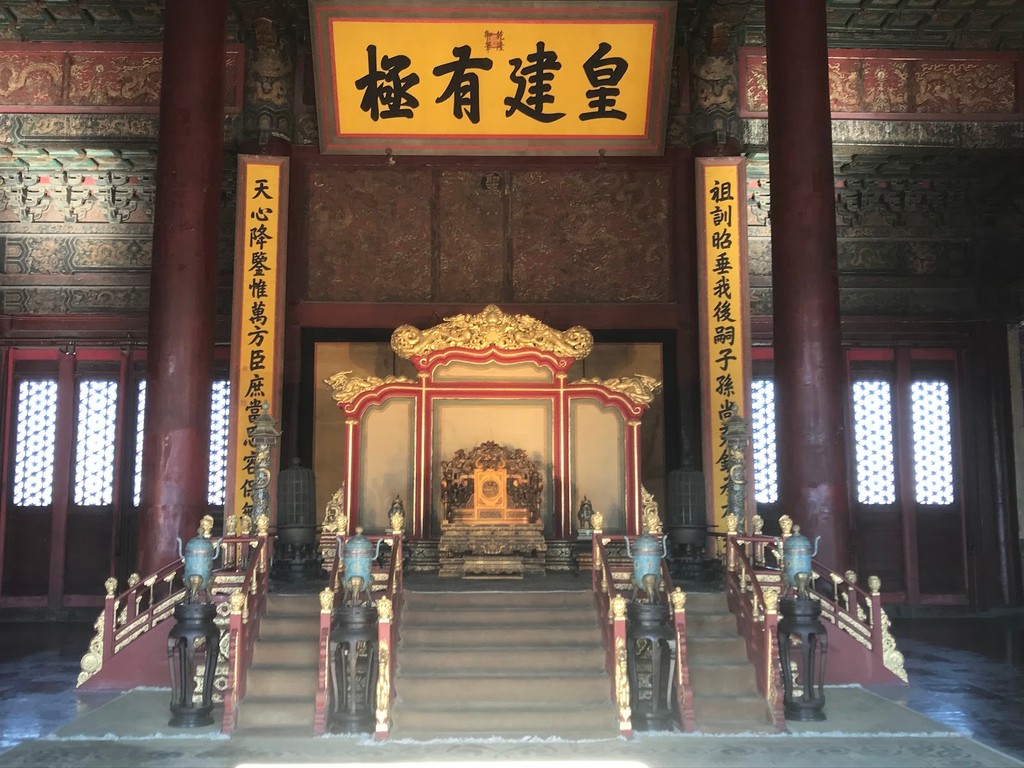
Hall of Preserving Harmony (Source: Google Maps)
The Hall of Preserving Harmony is the last of the three main halls within the Forbidden City, historically used for banquets and imperial examinations. This elegant structure showcases the pinnacle of traditional Chinese architectural design, with its exquisite details and harmonious proportions. The hall was a venue for significant events, including the selection of officials through rigorous examinations, reflecting the importance of education and meritocracy in imperial China. Today, it stands as a testament to the cultural and historical significance of the Forbidden City, offering insights into the life and governance of Chinese emperors.
Imperial Garden
Conclude your tour with a stroll through the tranquil Imperial Garden, a place of relaxation for the emperors, featuring ancient trees and classical Chinese landscaping.
We are working to fix the images. They're coming back soon.
The Imperial Garden is a serene and beautifully landscaped area within the Forbidden City, designed for the relaxation and enjoyment of emperors and their families. This tranquil garden features ancient trees, traditional pavilions, and classical Chinese landscaping, creating a harmonious environment that reflects the principles of nature in Chinese culture. The garden is divided into different sections, each with its unique charm, offering visitors a peaceful retreat from the bustling city. It serves not only as a recreational space but also as a representation of the imperial lifestyle and the appreciation of nature in Chinese history.

Your travels, your rules.
Create your own Free Walking Tours.
Set your preferences, distances and anything you want to do or see.
Completely free, no payment required.